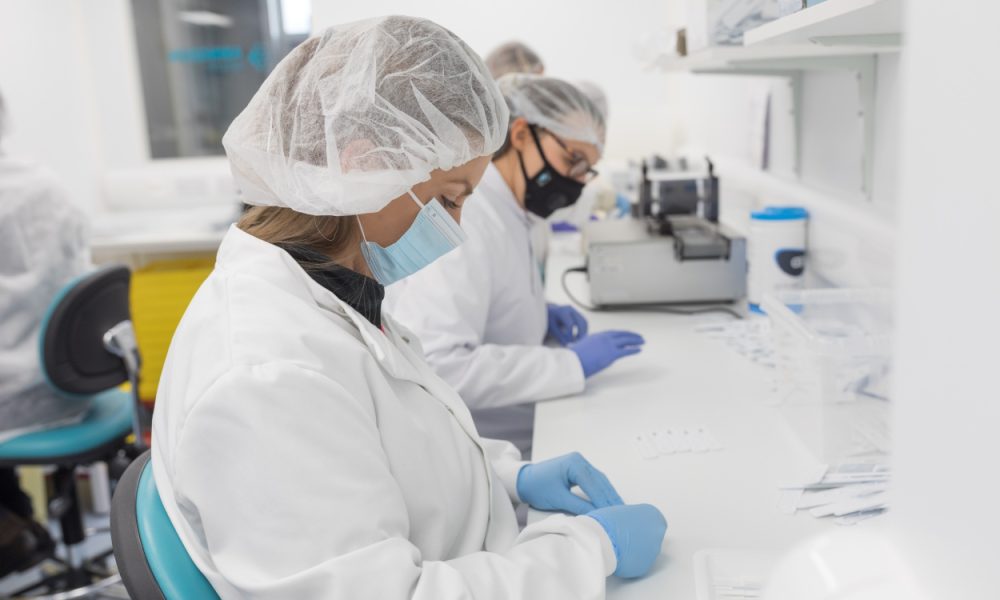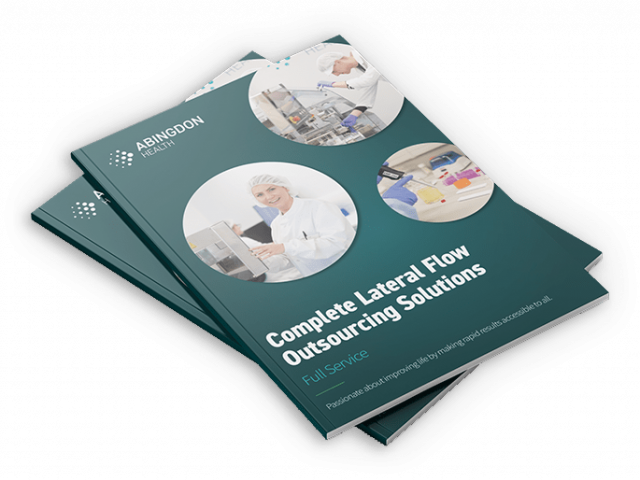Why Lot Diversity during process validation matters

What Are Lateral Flow Tests?
Mimicking Real-World Variability
Uncovering Potential Weaknesses
Building Confidence in Quality and Scalability
Regulatory Requirements
Implementing Lot Diversity in LFA Validation
Key Takeaways
In this blog Abingdon’s York site lead, Natalie Thrush, considers the importance of lot diversity in lateral flow development and why it underpins robust lateral flow test quality. Abingdon Health’s team has over 20 years’ experience in the lateral flow market and is a knowledge leader in the development, scale-up, transfer, manufacturing, and regulatory approval of lateral flow products across a range of sectors
What are Lateral Flow Assays
Lateral Flow Assays (LFAs) are rapid, portable diagnostic tools used for a wide range of clinical applications, from detecting infectious diseases like COVID-19 to measuring pregnancy hormones; as well as across animal health, plant pathogen, food, and environmental testing markets. The accuracy and reliability of these tests are crucial to their successful application, making process validation an essential step in their development and manufacture.
By way of definition, process validation refers to the stage in LFA development whereby the processes created to manufacture are tested to ensure they are robust, reliable, and consistent in providing the desired finished product.
One critical aspect of process validation for LFAs is lot diversity. This refers to the inclusion of batches or “lots” of different raw materials and components in the validation studies.
Let’s delve into why incorporating lot diversity is vital for robust LFA validation:
Mimicking Real-World Variability
LFA’s are not manufactured in a vacuum. They rely on a complex interplay of various components, each with inherent batch-to-batch variability. Raw materials like nitrocellulose membranes, gold nanoparticles, and antibodies can exhibit slight differences in properties between batches due to a variety of factors including sourcing (same/different suppliers), processing, age, and storage.
By incorporating diverse lots of these materials in the validation process, we can assess the LFA’s performance under realistic conditions. The key reason is to ensure that the LFA will function consistently even when encountering slight variations in material properties, mimicking the real-world scenario of using different batches during production.
Uncovering Potential Weaknesses
A validation study using only a single “ideal” lot of materials might miss hidden vulnerabilities in the LFA’s design or manufacturing process. Including diverse lots can expose potential interactions or incompatibilities between components that might compromise the assay’s sensitivity, specificity, or limit of detection.
Identifying these weaknesses early on through lot diversity testing allows for targeted process optimisation and refinement, leading to a more robust and reliable LFA.
Building Confidence in Quality and Scalability
A successful validation study with diverse lots provides strong evidence that the LFA manufacturing process is robust and can consistently produce high-quality tests. This instils confidence in regulatory bodies, paving the way for a smoother regulatory pathway which amounts to quicker and wider adoption. This allows for greater potential to scale-up production with confidence. It also ensures certainty that subject to the components meeting the required specifications, you can be confident that the manufacturing process is repeatable.
You do not want any uncertainty in the reliability and deliverability of manufactured tests to your customers; it is essential this component variability is understood and dealt with as part of the development of standard operating procedures and processes (e.g. QC processes) during the development process.
Regulatory Requirements
Regulatory bodies like the FDA1, recommend the inclusion of lot diversity in process studies for LFAs and other medical diagnostics. This emphasises the importance of this practice in ensuring the quality and reliability of these tests and at Abingdon Health, we ensure developing processes with the end goal in mind. One consideration when choosing your preferred development and manufacturing partner should be what management system standards your partner operates under and specifically what consideration is given to lot-to-lot variability. Abingdon Health operates under ISO 9001 and ISO 13485 and has a range of documented procedures to cover lot-to-lot variability during the development process.
Implementing Lot Diversity in LFA Validation
The specific approach to incorporating lot diversity will vary depending on the LFA being validated and the regulatory requirements. However, some general guidelines include:
- Select materials with established consistency: Focus on components with known batch-to-batch variations, such as antibodies, proteins, and nanoparticles.
- Define a representative range of diversity: Choose lots that encompass the expected range of variation in material properties observed in your supply chain.
- Test across the diversity range: Include representatives from each diverse lot in your validation studies, ensuring a comprehensive assessment of the LFA’s performance.
Key Takeaways
Lot diversity is not just a regulatory checkbox, nor an overengineered process. It is a critical element in building robust, reliable, and quality focused LFAs. By incorporating lot diversity in the development and validation process, we can mimic real-world conditions, uncover potential weaknesses, and build confidence in the quality and scalability of these essential diagnostic tools.
Decades of experience in taking tests from concept to commercialisation has led to Abingdon Health establishing effective processes that ensures efficient and cost-effective development, technical transfer and scale-up. Abingdon is ISO 9001 and ISO 13485 certified and adheres to Good Manufacturing Practice. This framework ensures that developed tests are manufactured in a consistent and robust manner batch in, batch out.
References
1.FDA Guidance for Industry – Process Validation: General Principles and Practices
Contact us using the form below to find out how the Abingdon team can help take your test from R&D into reliable manufacture and commercial success and talk about our value-added services such as regulatory and commercial support that provides a de-risked and streamlined route to market.

